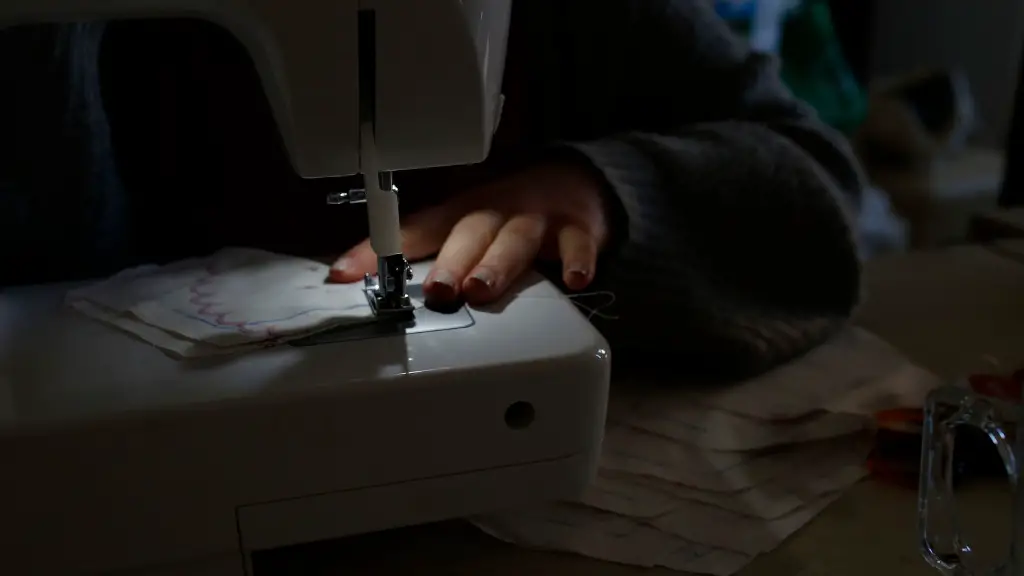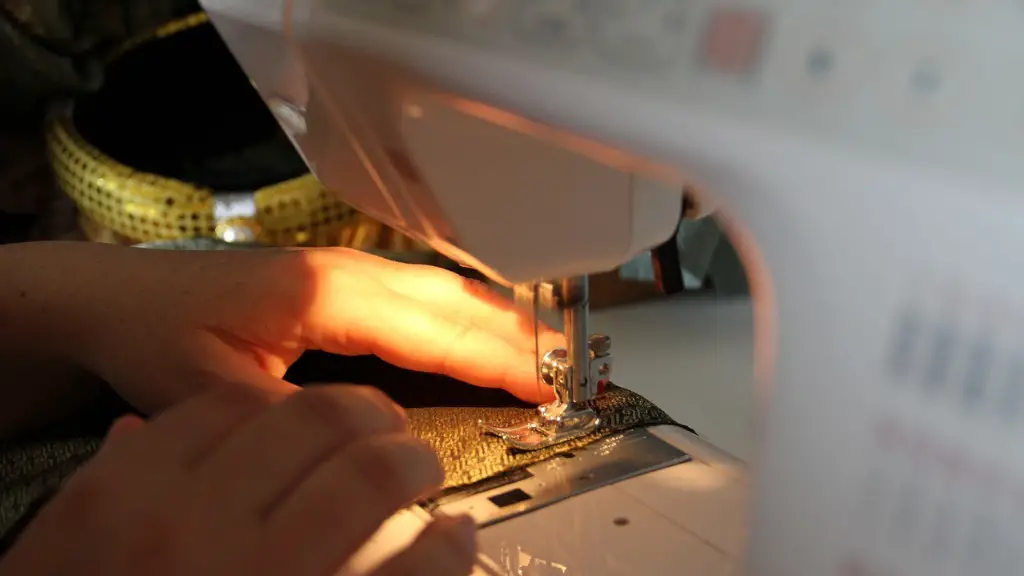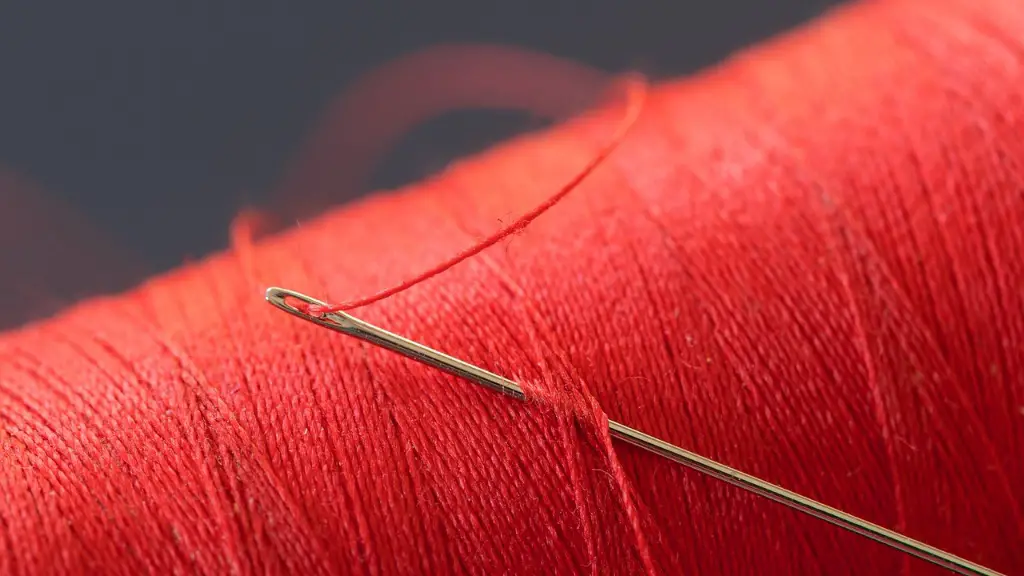Materials Needed for Dog Bandana
In order to make a bandana for a dog without a sewing machine, there are several items needed. This project requires fabric, scissors, a marker or felt tip pen, thread, a needle, a ruler, a safety pin and an iron – all items readily available from craft and fabric stores or online. The fabric chosen should be lightweight and easy to cut, such as cotton-polyester blends, silk, lightweight denim or lightweight synthetic chiffon.
Choosing the Fabric
When choosing a fabric, it is important to consider the size of the dog. For larger dogs, an extra-large bandana, such as 30″ by 40″ inches, while for small dogs a smaller size, such as 18″ by 24″ inches should be chosen. Additionally, tests should be conducted to determine if the fabric is durable enough for use by a dog. Dog owners should observe their dog’s behavior when playing to assess if a heavier fabric, such as denim, would be necessary.
Cutting the Fabric
The fabric is then cut into a 24” x 36” rectangle, or a smaller size if making a bandana for a puppy. With a ruler and marker, two diagonal lines intersecting in the center should be drawn. Once inserted into these lines, the fabric should appear diamond shaped. After cutting along the lines on the fabric, an additional 3/8 of an inch outside of the lines should be cut off in order to leave enough fabric to fold and hem.
Folding and Hemming the Bandana
Once the fabric is cut to the desired shape and size, the edges of the bandana must be hemmed to prevent the fabric from unraveling. To do this, the edges of fabric should be folded up twice. With an iron, each fold should be pressed to ensure that they stay in place. After both folds have been pressed, the fabric should be folded in half and the raw edges placed together. With a stitch, it is important to make sure that the stitches are small in order to create a neat, finished look.
Attaching the Safety Pin
A safety pin is used to attach the bandana to a dog’s collar. The safety pin should be placed at the center of the folded section of the bandana and secured tightly. Once the safety pin is attached, the bandana should be ready to be placed onto a dog.
Making Straps or Bows
For additional decoration, straps or bows can be attached to the bandana. To make a strap, the fabric should be cut into four 1”x 6” strips. With a needle, the strips should be folded in half and sewn. The straps are then attached to the pre-existing folds and can be used to secure the bandana on the dog or used as a styling effect. To make a bow with a snap, dog owners should either buy pre-made snap closures or make one with a safety pin and thread. The snaps should be securely attached to the bandana and will make it easier for the dog owner to put on the bandana and take it off.
Styles and Colors
The style and color of the bandana can be used to make statements about a dog’s personality. For creative designs, patches, ribbons, lace and other fabrics can be added to the bandana. Additionally, different colored fabrics can be used to make a two-sided bandana. If safety pins and straps are used, the look can be changed with the use of multiple bandanas.
Conclusion
In conclusion, it is relatively easy to make a bandana for a dog without a sewing machine. By investing in a few simple supplies and researching the appropriate size and fabric, dog owners can create an interesting and unique bandana for their furry friends.
Fun and Interactive Activities
When making a bandana for a dog, owners can get creative and develop fun and interactive activities. For example, by moulding the fabric into shapes, letters or numbers, a dog can learn to associate words and numbers with shapes and actions. Additionally, bandanas can also be used as a visual tool, by changing the print on each bandana and having the dog react accordingly with certain sounds or movements.
Functional and Durable Qualities
In addition to being stylish, the bandana should also be functional and durable. To ensure that the fabric is durable and long-lasting, choose fabrics that are easy to clean and will not fade. Additionally, owners should check the fabric regularly for any signs of wear or tear to ensure that the bandana remains valid.
Accessories and Trims
To make a bandana personal to a dog and their owner, trimmings and accessories can be added. For example, adding beads, ribbons, tassels and buttons can create a more intricate design. Depending on how creative one wants to be, any number of items can be incorporated into the bandana in order to express personality and style.
Embellishments
To further embellish a bandana, owners can opt to use fabric paints, markers or pens to create patterns and designs. By creating freehand patterns and designs, the bandana can be truly personalized to create something unique for a special pet.
Care and Maintenance
In order to ensure that the bandana remains in good condition, owners must routinely inspect the fabric and stitching. As a general rule of thumb, most bandanas can be safely washed in a machine on a gentle setting, hung to dry and ironed back into shape.
Comfort and Mobility
For dogs of any size, comfort and mobility are important considerations. Owners should remember that the bandana should be snug, but not too tight, so as not to restrict movement or cause discomfort. Additionally, if straps or bows are used, dog owners should check them regularly to make sure that they are not too tight or that the straps are not wrapped in a way that limits movement.



